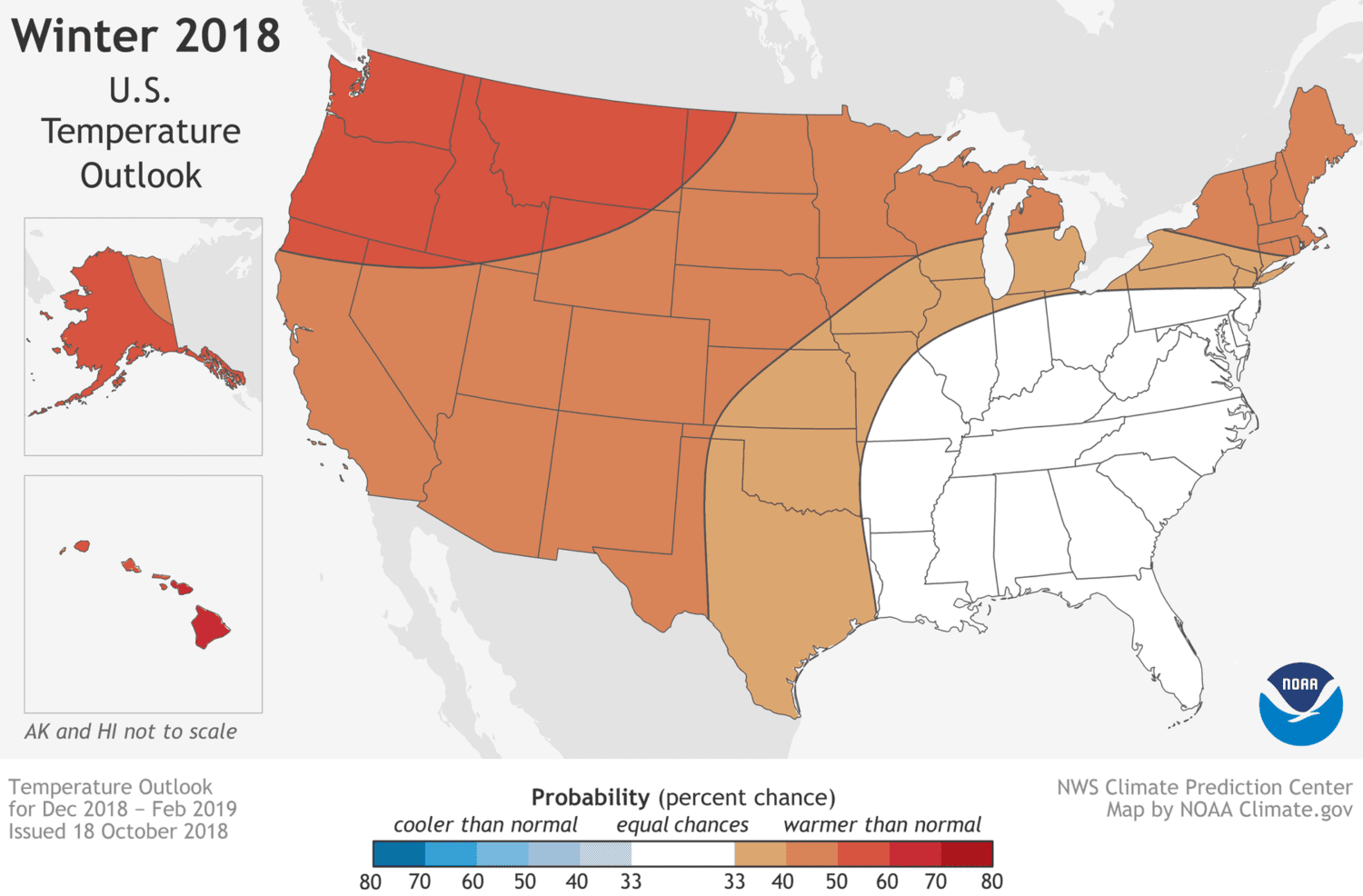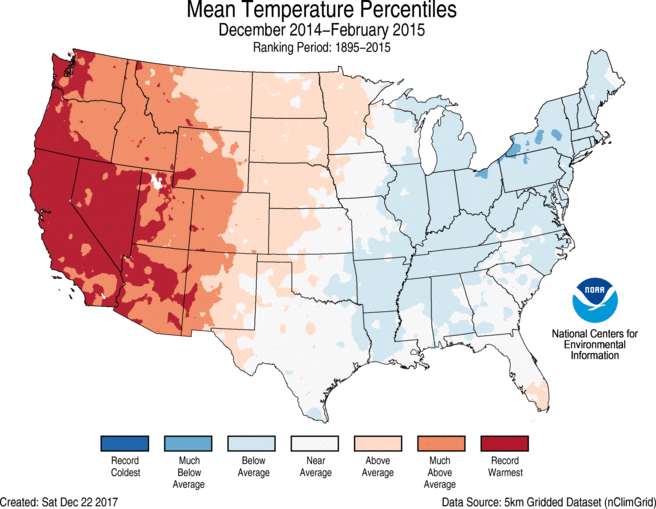The National Weather Service is predicting a mild winter for most of the U.S.

The Climate Prediction Center, a part of the National Weather Service, is calling for a mild winter for most of the United States.
The seasonal forecast is predicting warmer-than-normal conditions for most of the northern and western United States with the Pacific Northwest and Alaska seeing the biggest difference in temperatures.
The only part of the country that can expect typical winter temperatures will likely be in the Southeast, spanning the states you see below that are colored white, from Florida to Ohio and as far west as Arkansas.
Anyone hoping for a lot of snow is likely to be disappointed more often than not this winter.
This isn’t ruling out one or two big snowstorms between December and February, but the latest forecast is showing additional moisture falling across the South, while the typically colder North can expect drier conditions. It especially looks like Michigan and Montana will be drier than they usually are.
The reasoning behind this forecast is a developing El Niño. Currently, a weak El Niño is expected to develop during the winter.
El Niño winters typically divide the country into two halves: north and south. The northern half stays drier while the southern half gets extra precipitation.
Strictly looking at El Niño, this winter is lining up most closely to the winter of 2014-2015. If we take a trip back in time, the forecast from October 2014 looked very similar to this forecast: mostly mild while remaining dry in the North and wet in the South.
That winter turned out to be one that got off to an early start with an exceptionally chilly November, followed by many ups and downs in the temperature during the rest of the season.
Overall, however, the western half of the country experienced warmer-than-average temperatures while the eastern half received the colder air. The map below shows the mean temperatures for winter 2014.
As for snowfall that year, there were a few notable snowstorms and blizzards, but nothing record-breaking.
While this upcoming winter isn’t expected to be exactly the same as four years ago, this most recent forecast from the Climate Prediction Center certainly gives us a better idea, as well as extra time to prepare for what is likely to come between the months of December and February.

If you’re a little more old-fashioned, there’s always The Farmers’ Almanac and the Old Farmer’s Almanac.
Follow meteorologist Jason Meyers on Twitter and, if you want to know more about weather, check out his entertaining and educational YouTube videos.








